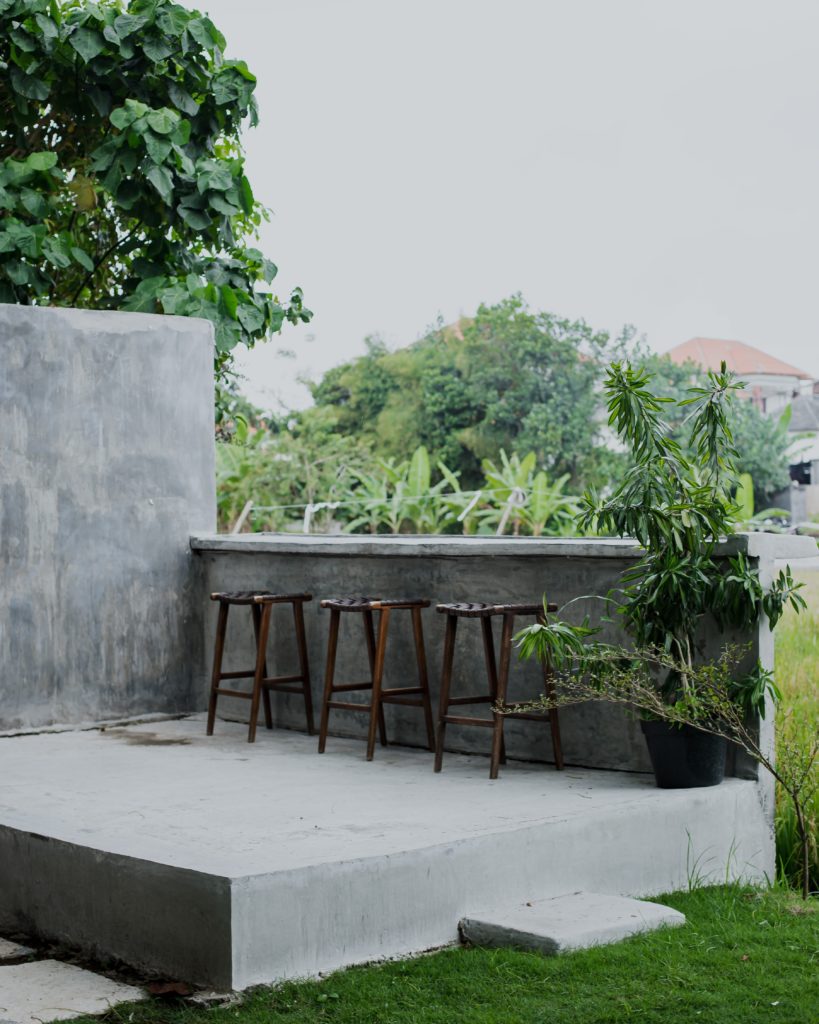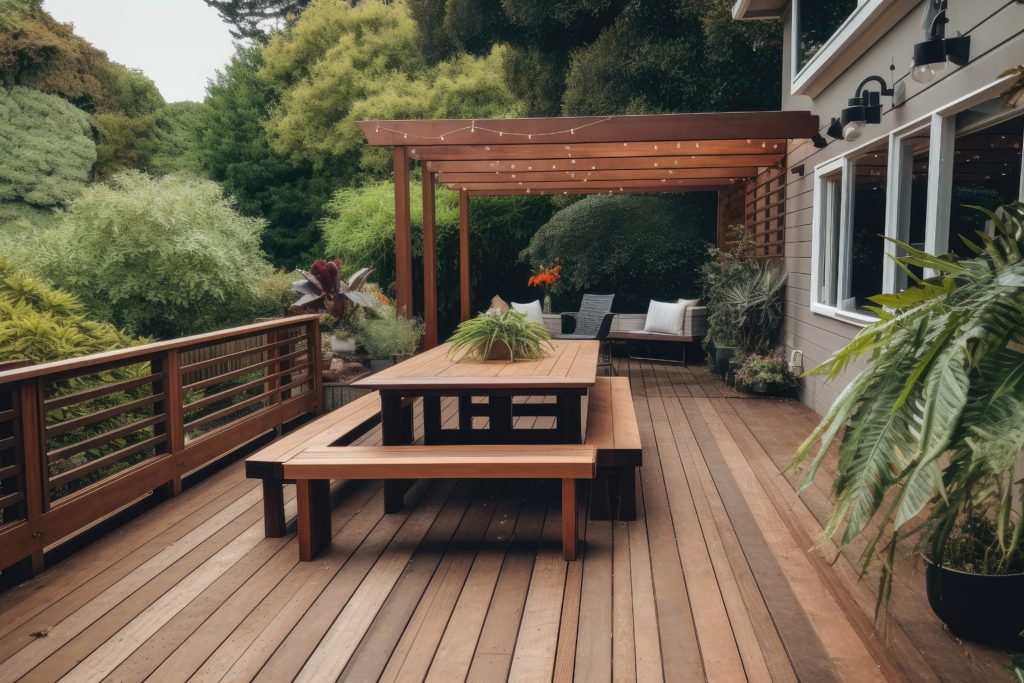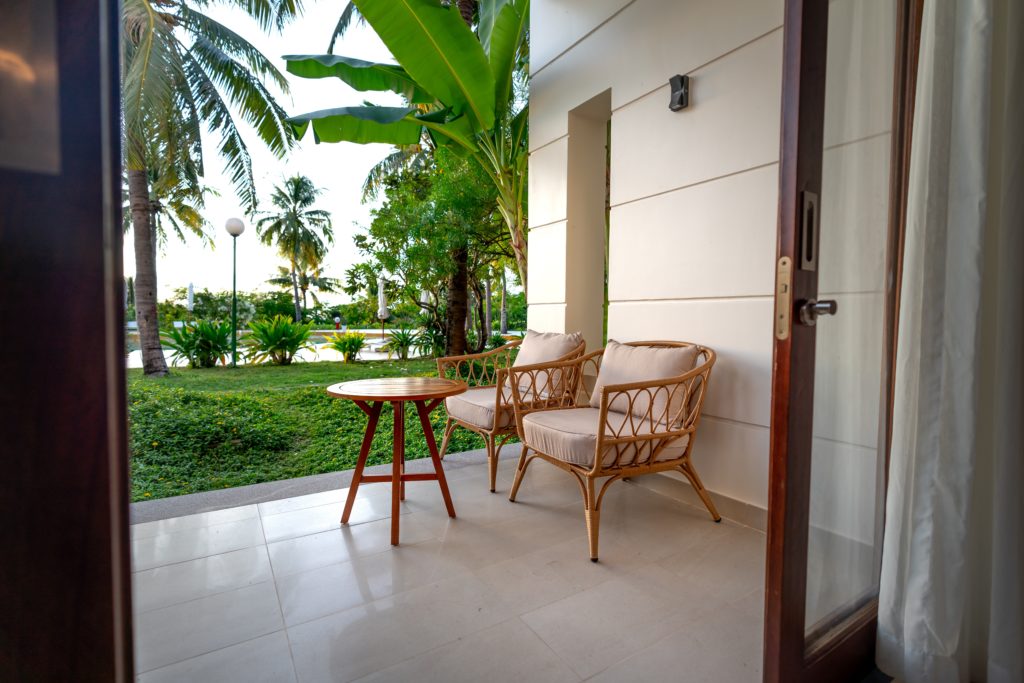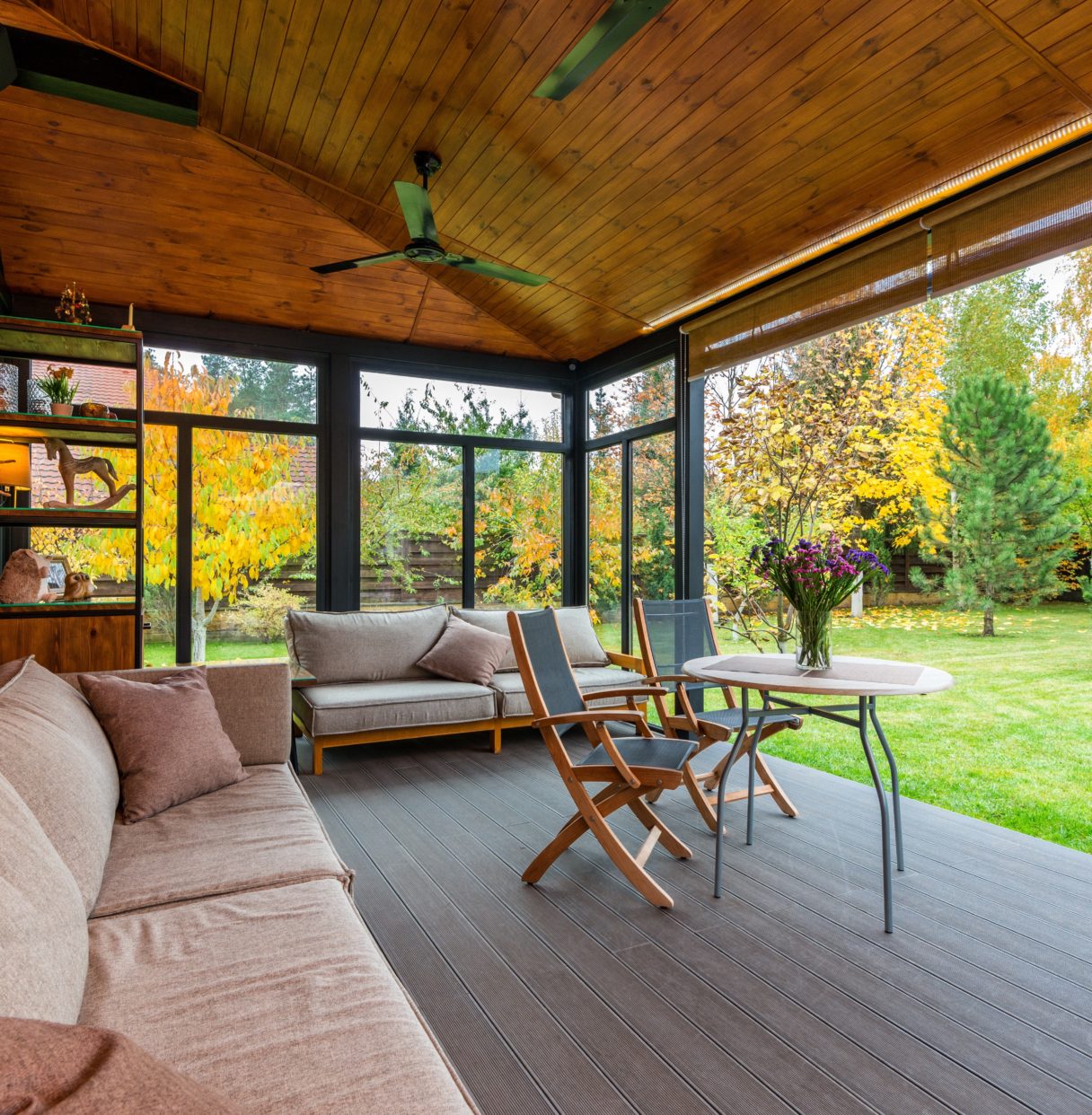The terrace is a real asset for a house. It allows you to enjoy the weather, relax, entertain guests and eat outdoors. Whether it’s a small urban terrace or a large garden terrace, it can be designed and decorated in a variety of ways to make it a real place to live. In this article, we will explore the different ideas for creating a terrace that is both aesthetically pleasing and functional, so that you can enjoy the beautiful days with your family and friends.
Concrete decking
The choice of decking is an important decision that will have a significant impact on the aesthetics and functionality of your outdoor space. Concrete is an increasingly popular material for decking due to its durability, versatility and modern aesthetic. In this article, we will explore the pros and cons of concrete decking, as well as the different finishing options available.

Advantages of concrete decking :
Durability: concrete is extremely resistant to weather, UV rays and damage from natural elements. It can last for decades without the need for major repairs.
Easy to maintain: Unlike other materials, concrete does not require much maintenance. An annual cleaning with soap and water is usually all that is needed to keep your concrete deck in good condition.
Versatility: concrete can be cast in a variety of shapes and sizes, making it suitable for any type of deck, regardless of its shape or size.
Aesthetics: with a range of finishes available, concrete can be customized to match any home or landscaping style.
Disadvantages of concrete decking:
High initial cost: concrete is more expensive than some other surfacing materials, but its longterm durability can make it a worthwhile investment.
Slippery: When wet, concrete can be slippery, which can make the deck unsafe in wet weather. It is important to choose a non-slip finish to avoid accidents.
Finishing options for concrete decking :
Stamped concrete: this technique involves creating a pattern on the surface of fresh concrete before it hardens. Stamped concrete can mimic the appearance of natural stone. Concrete is a very strong and durable material, making it a popular choice for decking. It can also be customised with colours, textures and patterns to suit any outdoor design style.
However, it is important to choose the right type of concrete and consider certain factors to ensure a successful installation. Decking concrete can be poured in place or installed as precast slabs. Cast-in-place provides a smooth, consistent finish, while precast slabs are easier to install and can be purchased in a variety of sizes and styles.
It is important to consider weather and UV exposure, as well as stain and scratch resistance when selecting concrete for decks. Sealing and varnishing options can also be used to protect and strengthen the surface of the concrete deck.
Finally, it is important to note that concrete can become slippery when wet, so it is recommended that an anti-slip treatment be used to ensure the safety of those walking on the deck. All in all, concrete decking offers many advantages in terms of durability, customisation and ease of maintenance. By considering the key factors and using the appropriate treatments, a concrete deck can be a stylish and practical choice for your outdoor space.
Wood decking
Wood decking is a popular choice for homeowners looking to add beauty and functionality to their outdoor space. Wood decks are durable, stylish and provide a comfortable surface for bare feet.
Common wood species used for decking include cedar, teak, ipe, oak and red fir. Each of these wood species has its own characteristics, including colour, texture and durability. When choosing a wood for your deck, it is important to take into account the local climate. Some types of wood are more resistant to rot and insects, while others are better suited to wet or dry climates. Once you have chosen your wood, it is time to think about installation.
Wooden decking can be installed using two methods: the traditional method and the clip-on method.
The traditional method involves screwing or nailing the wooden planks directly to the wooden joists. This method is more affordable but can be more difficult to install as it requires precision to keep the wooden boards straight and level. The clip-in method is a newer method and involves using plastic clips to secure the wood planks to the joists. This method is easier to install, as the clips hold the wood boards in place and space them evenly.
Once your wooden deck is installed, it is important to maintain it to ensure its durability. The wood should be cleaned regularly to prevent the build-up of dirt and debris. In addition, it is recommended that the wood be treated regularly with a preservative to prevent rot, insects and weathering.
Wood decking is an excellent choice for homeowners looking to add beauty and functionality to their outdoor space. With the right wood species, installation and maintenance methods, a wood deck can last for years while providing a beautiful outdoor space to relax and enjoy nature.
Tile Decking
Tile is a popular choice for decking because of its durability, ease of maintenance and variety of styles and colours available. Tiles can be ceramic, porcelain, natural stone or concrete.
When choosing a tile for your deck, it is important to consider the local climate and the intended use of the deck. Natural stone tiles may be more resistant to weathering and UV rays, while concrete tiles may be more resistant to stains and wear. Laying tiles on a deck requires a flat, stable surface. If your deck has a slope, it may be necessary to install a levelling system to ensure a flat surface for the tiles. It is also important to take into account the thermal expansion of the tiles and to provide expansion joints to prevent cracking.
Tiles can be laid in two ways: glue down and on blocks.
Glue-down installation is the most common method of laying tiles on a terrace. It involves applying an adhesive to the surface of the deck and then laying the tiles on top of the adhesive, spacing them evenly. A more recent method is the “studded” method, which involves the use of plastic studs to support the tiles. This method is easier to install and creates a level surface even on sloping terraces. The studs also allow for better ventilation underneath the tiles, which can help prevent moisture build-up and the growth of mould or mildew.
Once your tile deck is installed, it is important to maintain it to ensure its durability. Tiles should be cleaned regularly to prevent the build-up of dirt and debris. Natural stone tiles should also be sealed regularly to prevent staining and wear.
Tile decking is an excellent choice for homeowners looking to add durability and beauty to their outdoor space. With the right tile species, installation and maintenance methods, a tile deck can last for years while providing a beautiful outdoor space to relax and enjoy nature.
Finally, there are many decking options available to homeowners, each with its own advantages and disadvantages. Wood decks offer a warm, natural aesthetic, but require regular maintenance to maintain their appearance and durability. Tile decks are durable, easy to maintain and offer a wide variety of styles and colours, but require a flat, stable surface for installation. Concrete decking is economical, durable and weather resistant, but can be less aesthetically pleasing than other decking options. Whichever choice you make, it’s important to consider the characteristics of your deck and your personal preferences when choosing the best decking option for your outdoor space.



